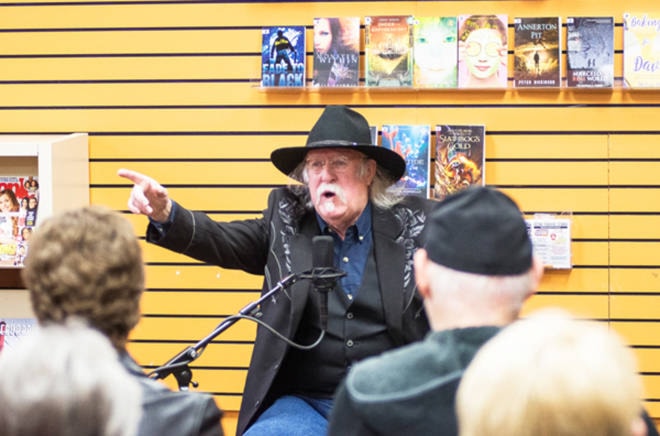While driving to the Coast a few weeks ago, the last week of September to be precise, I noticed how the leaves had not even begun to turn colour.
Odd I thought for this late in the fall. Driving back along Highway 1 a week after Thanksgiving, I was amazed at the palette of reds, ambers and golden yellows that coloured the landscape. It truly was a magnificent sight.
Standing on the banks of the Adams River the other day I found myself once again, in awe of nature and the plethora of colours that surrounded me – until I looked down into the waters of the river and my heart sank.
I was totally devastated by the lack of salmon. I remember standing on the banks of the Adams, marveling at the sheer numbers of salmon that had come to spawn. Those numbers were nothing compared to what they used to be. Each year they become less and less. No longer does the river turn red with spawning sockeye. I stood there wondering if the day will ever come when sockeye numbers return to what they once were –or anything close.
There is plenty of blame to go around – over-fishing by both commercial and First Nations fishers, poaching, pollution are all part of the problem – the list goes on and on. Pointing the finger, however, will not solve the problem unless of course, we are talking about the government.
Salmon come under the auspices of the federal government. If you were to put things into government speak, one might say “perhaps the real problem here is that currently there doesn’t seem to be any sort of solution to the problem.”
The situation is far from being funny though. We need solutions now, desperately, before it’s too late. It is the current federal government that is responsible for putting those solutions into place.
What ever happened to the recommendations made by the $37 million Cohen Commission?
Way back in 2009, when the sockeye returns had become disturbingly low, the federal government created a public inquiry (the Cohen Commission) to determine just exactly what was happening to all the disappearing sockeye salmon. The commission’s Final Report: The Uncertain Future of the Fraser River Sockeye, was heralded at the time as being “a blueprint for salmon conservation.”
The report made a total of 75 recommendations. It was tabled in the House of Commons back on Oct. 31, 2012.
That was five years ago, yet few if any of the recommendations put forward have actually been put into place. Instead, the federal government has simply stood by and watched as sockeye salmon numbers have steadily declined.
As it happens, I was on the Fraser River a few weeks ago sturgeon fishing and it came up in conversation as to what is happening with the sockeye salmon.
We had been watching a number of small boats hauling their nets out onto the river. I said that this year’s Adams River run was going to be the smallest of its four- year cycle so there probably wouldn’t be a lot of fish returning to spawn.
I never imagined the run would be as small as it was and, based on what I saw the other day, as well as the returns over the past 10 years or so, I’m not really altogether sure if the sockeye are ever going to make a comeback. I know they certainly won’t have a chance as long as there is any sort of fishery on the Fraser that can net them before they ever make their way to the Adams.
The commercial, First Nations and sport fisheries all have to recognize the fact that the sockeye fishery has to be totally closed until such time as sockeye numbers come back if the Adams River run is ever going to have even the slightest chance of survival.
Best of luck to any government who tries to put that one through.
Nature is truly wondrous, but it can only do so much to heal the damage that we have done. Sadly, we have to look to ourselves – and our government – to fix the damage that we have done.
Like I said, best of luck.
